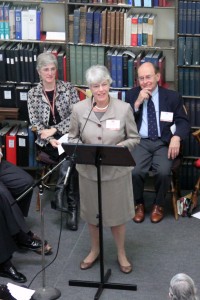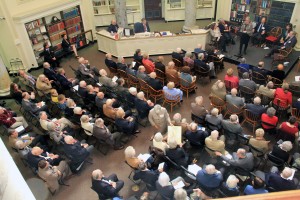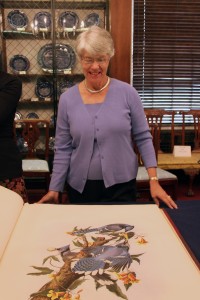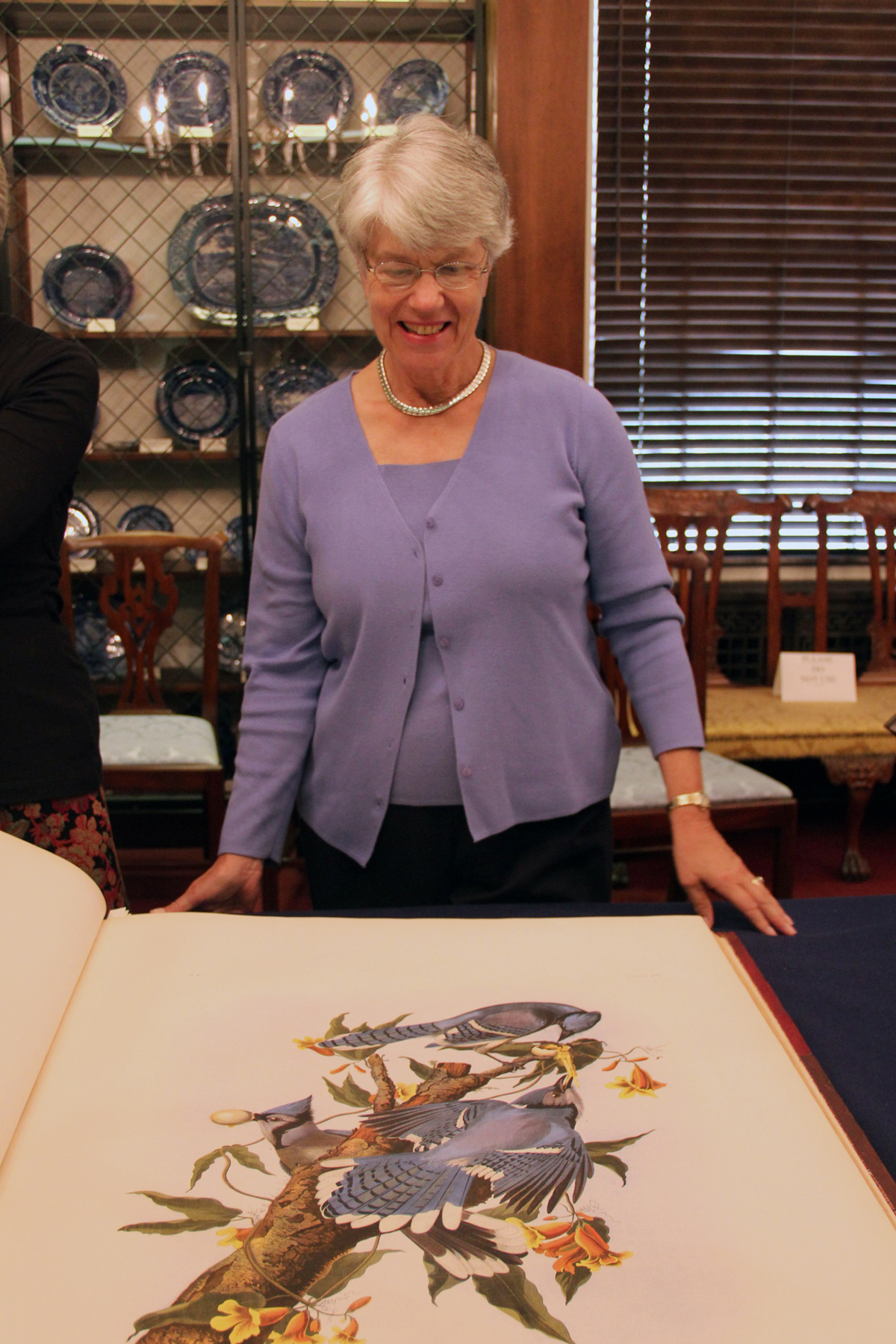As a description of a professional trajectory in the research library world, it certainly makes for an impressive resume:
- Library Assistant, American Antiquarian Society
- Curator of Maps and Prints, American Antiquarian Society
- Andrew W. Mellon Curator of Graphic Arts, American Antiquarian Society
- Director, Center for Historic American Visual Culture, American Antiquarian Society
At the same time, it’s not unheard of. Plenty of people have four different positions with the same institution, adding responsibilities along with experience.

But when you put in the dates for these positions—the only jobs listed in the “Employment History” section of Gigi Barnhill’s CV—the mind boggles. Gigi was hired as a Library Assistant at AAS in October 1968. She became the Mellon Curator of Graphic Arts in 1973. She retired from her position as the Director of the Center for Historic American Visual Culture (CHAViC) in July 2012.
For those of you keeping score at home, that’s 44 years of service to the same institution. Given that the institution in question just celebrated its bicentennial, it’s easy to figure out that Gigi Barnhill was a member of the AAS staff for over one-fifth of its history.
A roundtable was held to honor Gigi’s remarkable career at AAS as part of the Society’s bicentennial celebrations on Friday, October 26. A crowd of over 100 friends, colleagues, former fellows, and well-wishers gathered in Antiquarian Hall to celebrate Gigi and the AAS’s anniversary. The roundtable was structured around a list of qualities and skills that together provide the Society’s model for the “ideal curator.” We invited colleagues who had interacted with Gigi at various points throughout her career to each talk about one particular quality on the list.
The first curatorial characteristic was “Advance scholarship through publication and research.” To address Gigi’s illustrious record as a scholar of early American visual culture, we invited the person Gigi credits for getting her interested in American prints in the first place. David Tatham, professor of art history emeritus at Syracuse University and a distinguished scholar of nineteenth-century American art, talked about only a few of Gigi’s achievements (we had to limit him to a few, since a catalogue raisonné of all of Gigi’s publications assembled by AAS staff before her retirement ran to over fifty titles).
The next quality on the list, “Acquire materials for their collections and build collections of secondary and reference resources at AAS,” was taken up by Don Cresswell. Don is a co-founder of the Philadelphia Print Shop, one of the world’s leading specialist shops in antique prints, maps, in1982. As such, he sold many items to Gigi for the AAS collections over her years as Curator of Graphic Arts. Don offered a look back at some of the key books in the field that shaped scholarship in early American prints, and talked about how those landmark works shaped the collecting of a generation of curators.

Don was followed by Gigi’s successor as the Mellon Curator of Graphic Arts, Lauren Hewes, who talked about Gigi’s role in “Serving as an advocate for her own collections, advising on collection development, preservation, and access, while considering the needs of the rest of the Society’s collections.” Having worked right next to Gigi since 2005, Lauren witnessed firsthand Gigi’s dedication to developing AAS’s holdings of graphic arts materials and making them as widely accessible as possible.
The next quality up for discussion was that AAS curators should “Serve as ambassadors of the Society to the communities of Americana collectors and dealers, and maintain active communication and visitation with these important constituencies.” Rosemarie Tovell brought an international dimension to the proceedings in her discussion of Gigi’s outreach to many different communities over the years, most notably the American Historical Print Collectors Society. Rosemarie was curator of the Canadian Prints and Drawings Collection at the National Gallery of Canada for over 30 years, and encountered Gigi as a colleague and peer at many points throughout their careers.
The next curatorial quality—“Responsible for providing reference services to readers and fellows”—will be utterly familiar to anybody who had the privilege of doing research at AAS during Gigi’s career. Nenette Luarca-Shoaf, a recent Ph.D. in art history from the University of Delaware who held a Last Fellowship in visual culture at AAS in July 2009, talked about how Gigi’s knowledge of the collection and guidance to unexpected materials was crucial to her research on the Mississippi River in antebellum visual culture.
Martha McNamara, Director of the New England Arts & Architecture Program and professor of art history at Wellesley College, talked about the most recent phase of Gigi’s career at AAS in addressing the curator’s responsibility to “Teach and share through workshops, seminars, conferences, and tours.” Martha has been on the steering committee of CHAViC since its inception, and co-edited (with Gigi) the volume of essays, New Views of New England, that resulted from the first CHAViC conference, held in the fall of 2007. With the help of generous donors such as Jay Last and Diana Korzenik, CHAViC provides an ongoing platform of programs around visual culture at AAS.

The final quality addressed on the roundtable was one that only those who have worked with Gigi can truly appreciate. AAS curators are expected to “Be members of a staff that works collaboratively,” and while Lauren Hewes talked about the pleasures of working side by side with Gigi, in truth any number of Gigi’s colleagues at AAS over her 44 years here could have made similar remarks.
After some remarks from Gigi, the audience was treated to a first look at several gifts of collection materials that had been donated to AAS in honor of Gigi’s retirement, including the monumental Bien chromolithographed edition of Audubon’s Birds of America (the gift of Jay Last). It is impossible, of course, to sum up a career of over four decades in ninety minutes of conversation, so it was fitting that the roundtable ended with generations of readers inspired by Gigi’s example, crowded around books and prints in the reading room.
Editor’s Note: See an earlier post about other recent AAS staff retirements here.


Gigi is the best! What a wonderful celebration of her knowledge, career, contributions, and achievements. My work has benefited from every discussion I have enjoyed with her. And I have benefited from her sage advice on many other matters this profession creates. Thanks so much, Paul, for sharing this event with FOGs (Fans of Gigi)!
Hard to imagine how much emptier the halls at AAS must be without her smiling face. Congratulations, Gigi!!